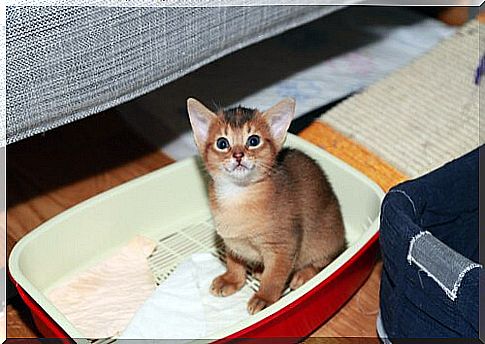How To Improve Bad Behavior In Cats

Often times, people complain about bad behavior in cats. They jump on all kinds of objects and furniture, destroy curtains or just try to escape.
To bad behavior in cats to improve, it occupies a lot of patience and perseverance, but it is quite possible.
We want to support you in your project and therefore have a few tips and advice for you to improve bad behavior in cats.
Causes and Solutions for Bad Behavior in Cats
The bad behavior of your velvet paw can be expressed in different ways and also arise from different causes.
It is therefore important to pay attention to every change in behavior in order to quickly find out what is actually going on.
Below we look at the most common causes of bad behavior in cats.
Pathological causes
Some diseases can cause severe pain or impair the function of the senses.
If a cat feels weak or vulnerable, it can display defensive behavior or develop new habits. This happens more often in older animals, but it can happen at any age.
If your paw is hiding more often, is more aggressive than usual or develops very unusual behavior, you absolutely have to take it to the vet.
The expert then examines the cat’s health and rules out disease as the cause of the bad behavior.
That being said, every cat should be brought in for regular checkups. In this way we prevent diseases and support balanced behavior.
You should therefore visit the vet every six months, have the vaccinations and deworming carried out regularly and feed the cat with high-quality feed.
Insufficient upbringing and socialization
Like us, cats learn most of their habits during their childhood. Your character is also even more flexible in the first months of life, which makes learning easier.
If we want a well behaved cat who listens to us, we should take care of its upbringing and socialization from an early age.

The first step in preventing bad behavior in cats is not to intensify it when cats are young.
For example, if we don’t want the kitty to climb onto the bed or sofa, then we have to consistently forbid that from the start. If we allow certain behaviors to a young animal, these become habits in adulthood.
If a cat accepts a certain behavior as allowed, it does not understand why it is allowed to do it one day and why it is banned the next.
To avoid this, it is best to create clear rules from day one and to adhere to them consistently.
Too little exercise and stimulation
Domestication has many advantages for our velvet paws. They are less exposed to predators and there is always plenty of food. But living as a pet also means much less exercise.
Since cats no longer have to forage and hunt for their own food, their physical activity has been reduced to a minimum.
Due to the lack of the need to invest energy and exercise their brains, many cats develop various symptoms of stress and boredom.
This is then reflected negatively in their behavior and can even lead to increased aggressiveness .
If we want to avoid bad behavior in cats, we should enrich their environment in order to offer the animals a species-appropriate environment.
So it takes toys, a scratching post and other accessories so that our velvet paws can train their heads and bodies.
These days there are mazes and entertainment stations that offer kitties everything from exercise to a relaxing massage.

We can also add sensual stimulation to awaken the cat’s mind. Cat grass, for example, is a wonderful alternative to stimulate your sense of smell. There are also videos and interactive games to activate hearing and sight.
If we combine all of these activities, our cat is active, healthy and balanced.
Use positive reinforcement
The “traditional” parenting methods do not work with cats. They shouldn’t be used on any animal as they are based on creating negative feelings such as fear or insecurity.
Cats do not submit to humans and do not learn anything through violence.
Positive reinforcement is the safest, most efficient way to improve bad behavior in cats. If you want to teach your cat something, it is best that you always have a reward ready for him when he does something right.
It can be treats, but toys, accessories, pats or a delicious home-made menu are also accepted.
Avoid scolding them
If your cat is misbehaving, it won’t help much to scold them. This only adds to the stress and creates negative feelings.
If we catch the velvet paw with a prank, it is enough to say “no” in a calm and firm tone. If, on the other hand, we notice positive behavior, we reward this with a treat.









